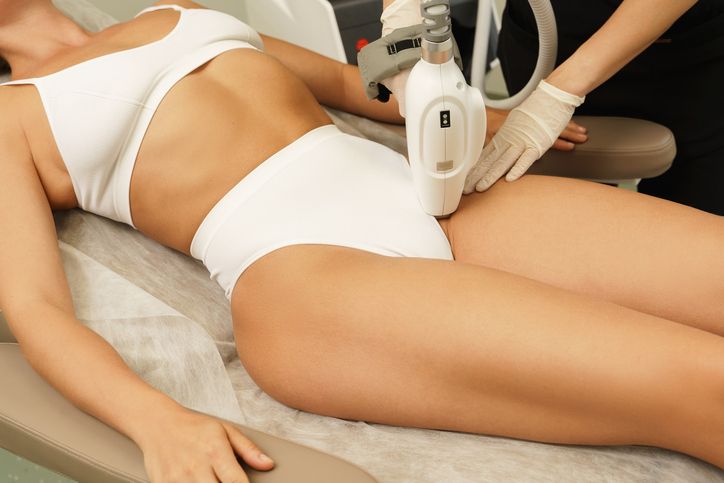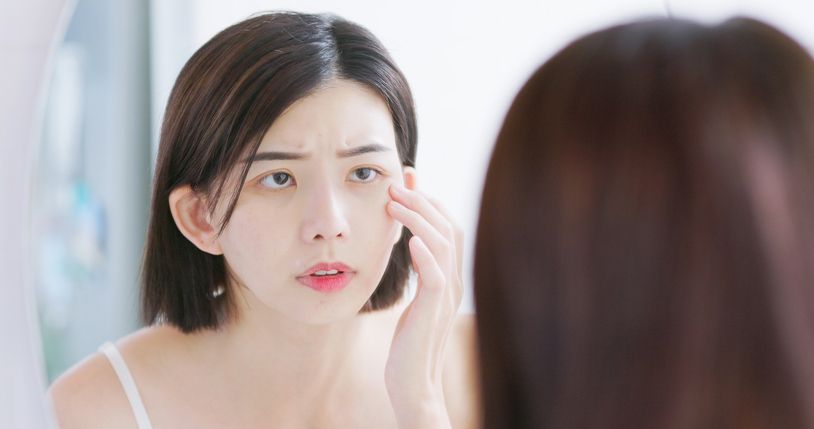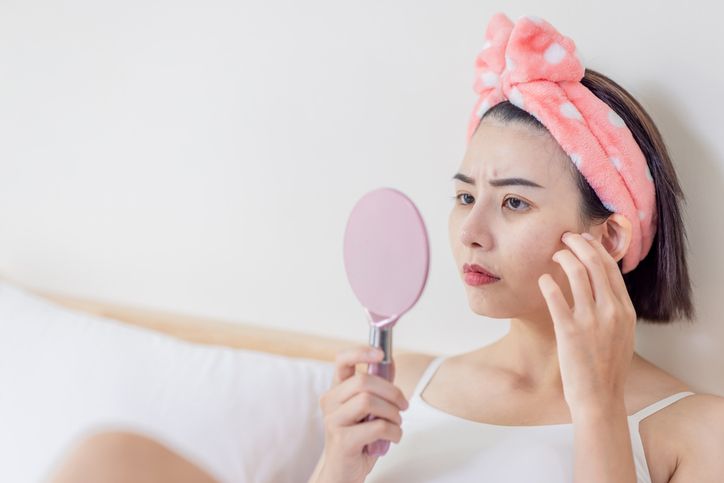- Home
- Trend
- Weight Loss Strategies
- Acne Tips
- Hair Health Information
- Blemish Removal Tips
- Acne Scar Removal Tips
- Muscle Building Techniques
- Intimate Care Tips
- Postpartum Intimate Care
- Eye Bags Wiki
- Tips for Face Slimming
- Secret of Permanent Hair Removal
- Breast Enlargement Tips
- Cure to Snoring
- Marionette Lines
- Skin-Tightening Secrets
As we age, the natural fat around the eyes can become more prominent, leading to the development of under-eye bags—a common issue that can leave you looking tired, older, and less lively. Learn about your ageing process and the weakening of connective tissues, as well as exploring various treatment options so you can effectively reduce or manage the appearance of under-eye fat and bags, helping to restore a more youthful and revitalised look.
Eye Fats and Bags Under the Eyes: How Do They Differ?
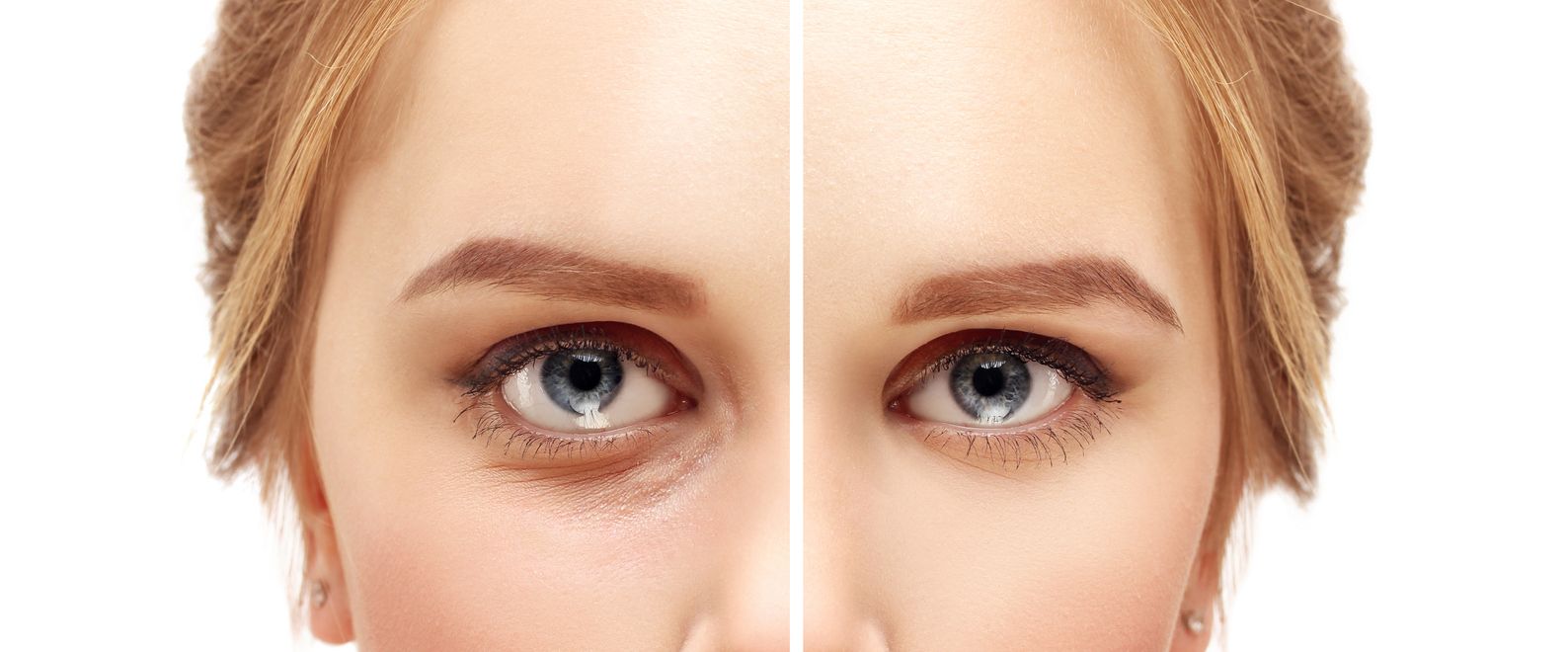
Both eye fat and under-eye bags can contribute to a tired or aged appearance. Here’s a detailed explanation of each:
Eye Fats
Eye fats, also known as periorbital fat or fat pads, are natural fat deposits located around the eyes. These fat pads are positioned within the eye sockets and serve several essential functions. They act as cushioning for the eyes, providing protection and support to the delicate structures around them.
• Location: Eye fats are situated behind the orbital bones in the eye sockets. There are three primary fat pads: the medial (inner), central (middle), and lateral (outer) fat pads. These are strategically placed to offer cushioning and stability to the eyes.
• Function: These fat pads play a crucial role in absorbing shocks and protecting the eye structures from impacts. They also help to maintain the position of the eye within the orbit, ensuring proper alignment and support.
• Changes with Age: As we age, the connective tissues that hold these fat pads in place naturally weaken. This weakening causes the fat pads to shift or protrude more noticeably. The result is often a visible bulge or puffiness under the eyes, which can contribute to an aged or tired appearance.
Causes of Changes
• Ageing: The natural ageing process leads to a reduction in skin elasticity and the weakening of connective tissues. This allows the fat pads to become more prominent and noticeable.
• Genetics: Genetic factors can predispose individuals to more prominent or pronounced fat pads. Some people may naturally have more noticeable fat deposits around their eyes due to their genetic makeup.
• Lifestyle Factors: Certain lifestyle factors, including poor sleep, an imbalanced diet, and dehydration, can exacerbate the appearance of eye fats. These factors can contribute to the overall puffiness and make the fat pads more evident.
Eye Bags
Eye bags, or under-eye puffiness, refer to the noticeable swelling or protrusion of the tissue under the eyes. This condition often gives a person a fatigued or aged appearance and can vary in severity from mild puffiness to more pronounced swelling.
• Location: Eye bags are situated directly beneath the eyes, manifesting as a swollen or puffy appearance in this area. They tend to be most prominent just below the lower eyelids.
• Appearance: The swelling can range from slight puffiness to more significant bulges, sometimes creating a shadowy or tired look. This swelling can also cause the lower eyelid area to appear heavier and less smooth.
• Causes: Eye bags are influenced by several factors, including fluid retention, ageing, allergies, and lifestyle choices. Each cause contributes to the swelling and protrusion seen in this condition.
Causes of Eye Bags
• Fluid Retention: The accumulation of fluids in the under-eye area often leads to puffiness. This can be particularly noticeable after waking up, after consuming high amounts of salt, or during periods of hormonal changes.
• Ageing: As people age, their skin loses elasticity and the supportive connective tissues weaken. This allows fat deposits to push forward and create the appearance of bags. Additionally, the skin's thinning with age can make underlying fat more visible.
• Allergies: Allergic reactions can trigger inflammation in the under-eye area, leading to fluid accumulation and swelling. Seasonal allergies or reactions to certain products can exacerbate this effect.
• Sleep Deprivation: Lack of adequate and restful sleep often leads to increased fluid retention and can intensify the appearance of eye bags. The body's reduced ability to effectively manage fluids can result in noticeable puffiness.
Key Differences Between Eye Fats and Eye Bags
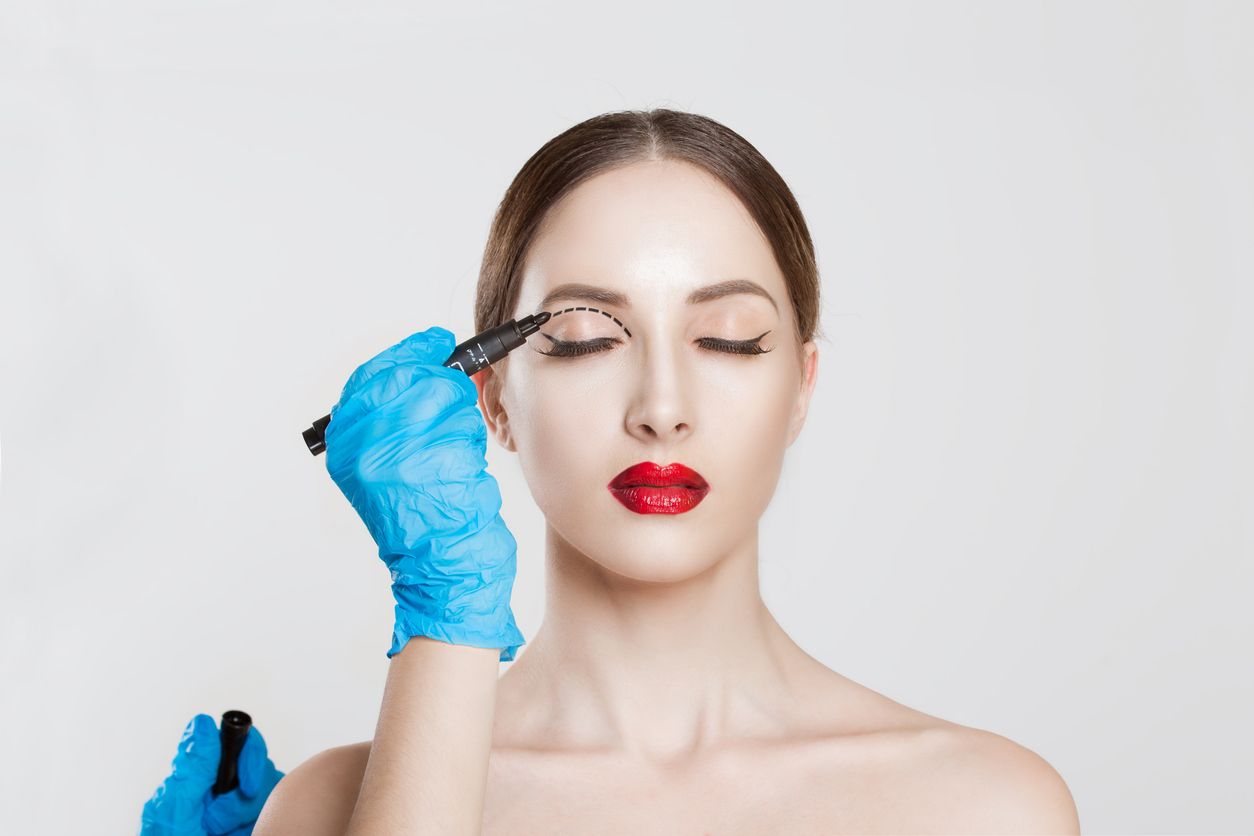
Origin and Structure
Eye fats and eye bags may seem similar at first glance, but they stem from different underlying causes. Eye fats refer to natural fat deposits that are located within the eye socket. These fat pads serve as a cushion for the eyes and are essential for protecting the delicate structures within the eye. However, as we age, the connective tissues that hold these fat pads in place weaken, causing the fat to become more prominent. This leads to well-defined, consistent bulges under the eyes that do not fluctuate significantly over time. Eye fats are a permanent structural feature, and their prominence is primarily due to ageing and the loss of tissue support.
On the other hand, eye bags are the result of swelling or the protrusion of tissue under the eyes, often due to fluid retention, changes in skin elasticity, or overall health. Unlike eye fats, eye bags can appear and disappear, depending on various factors such as sleep quality, diet, allergies, and hydration levels. They are less about the physical structure and more about temporary conditions that cause puffiness.
Appearance
The appearance of eye fats and eye bags also differs noticeably. Eye fats typically present as a more defined and permanent bulge in the lower eyelid area. These fat pads create a consistent protrusion that remains largely unchanged regardless of lifestyle factors. The bulging is uniform and does not vary much with daily habits or environmental conditions.
In contrast, eye bags are characterised by a variable degree of swelling or puffiness. The appearance of eye bags can change throughout the day or week, often influenced by factors like how much sleep you get, your diet, your stress levels, and your hydration. Eye bags may appear more pronounced after a poor night’s sleep or after consuming a salty meal, as fluid retention plays a significant role in their development. Unlike the more permanent and static nature of eye fats, eye bags tend to be dynamic, reflecting the body's short-term conditions and responses.
免費體驗
R6 Miracle Eye Rescue Treatment
1 Minute Self-Registration
Date should not be before minimal date
Is it Possible to Get Rid of Bags Under the Eyes and Eye Fats Without Surgery?
Several non-surgical methods are available to address eye fat and eye bags, offering effective solutions for those who prefer to avoid surgery or seek less invasive options. These approaches vary in their effectiveness and are generally safe, though they come with potential side effects. Here's an overview of common non-surgical methods and their possible risks:
Topical Treatments
1. Retinoids
Creams containing retinoids are known for their ability to increase skin elasticity and stimulate collagen production. This can help reduce the prominence of fat pads and improve overall skin firmness.
However, retinoids can cause side effects such as skin irritation, redness, peeling, and increased sensitivity to sunlight. People with sensitive skin may experience more pronounced reactions, so it's important to start with lower concentrations and use sunscreen during the day.
2. Caffeine-Infused Creams
These creams work by constricting blood vessels, which can temporarily reduce puffiness and fluid retention under the eyes. While generally safe, side effects can include mild irritation or dryness, particularly in those with sensitive skin.
Additionally, the effects are temporary, meaning consistent use is required to maintain results.
3. Hydrating Eye Creams
Creams with ingredients like hyaluronic acid and peptides are designed to enhance skin hydration, reduce puffiness, and smooth the skin. These products are generally well-tolerated, but some individuals might experience minor reactions such as itching or redness.
Overuse of products containing potent ingredients could potentially lead to milia (small white bumps) under the eyes.
Cosmetic Procedures
1. Dermal Fillers
Dermal fillers, such as hyaluronic acid, can be injected into the under-eye area to fill in hollows and reduce the appearance of bags. They also help smooth the area around eye fat pads, creating a more even surface.
While effective, fillers can have side effects, including bruising, swelling, and in rare cases, lumps or asymmetry. There's also a small risk of complications like infection or, in very rare instances, vascular occlusion, which can lead to tissue damage.
2. Laser Resurfacing
This procedure uses laser technology to improve skin texture and tightness, reducing the prominence of eye fat pads and smoothing the skin around the eyes.
While laser resurfacing is generally effective, it can cause side effects such as redness, swelling, itching, and in some cases, hyperpigmentation or scarring. The skin may also be more sensitive to sunlight after treatment, requiring diligent sun protection.
3. Radiofrequency (RF) and Ultrasound Therapy
These treatments use energy to heat the deeper layers of the skin, stimulating collagen production and tightening the skin. This can gradually reduce the appearance of both eye fat and eye bags over time. Common side effects include temporary redness, swelling, or tingling in the treated area.
Rarely, there can be a risk of burns or blisters if the procedure is not performed correctly. Results are typically gradual and may require multiple sessions to achieve desired outcomes.
Non-Ablative Intervention: For Fats and Bags Under Your Eyes
If you’re looking to address both eye fat and eye bags without undergoing surgery, the Miracle Eye Rescue Treatment from Perfect Medical offers an effective, non-invasive alternative. This treatment not only targets these concerns directly but also works synergistically with other non-ablative methods, providing a comprehensive solution for under-eye rejuvenation.
The Miracle Eye Rescue Treatment employs a combination of advanced technologies to target the underlying causes of both eye fat and eye bags. The treatment integrates medical-grade radio frequency (RF), red and blue light therapy, and microcirculation enhancement to deliver a multifaceted approach to under-eye rejuvenation.
1. Medical-Grade Radio Frequency (RF)
This technology delivers controlled RF energy deep into the skin layers, stimulating collagen and elastin production. This process tightens and firms the skin, which can help reduce the appearance of under-eye fat by improving skin elasticity and lifting sagging areas.
2. Red and Blue Light Therapy
Red light therapy enhances blood circulation and promotes healing, which can alleviate puffiness and reduce the appearance of dark circles. Blue light therapy targets bacteria and inflammation, helping to minimise puffiness and improve the overall texture of the skin.
3. Microcirculation Enhancement
By boosting blood flow and lymphatic drainage, the Miracle Eye Rescue Treatment helps reduce fluid retention that contributes to under-eye bags. Improved microcirculation supports the removal of toxins and revitalises the skin, making the under-eye area look fresher and more youthful.
Benefits of Combining Treatments
Integrating the Miracle Eye Rescue Treatment with other non-surgical methods such as fillers, laser resurfacing, or radio frequency and ultrasound therapy can enhance overall results. While these methods focus on specific aspects like volume loss or skin tightening, the Miracle Eye Rescue Treatment provides a holistic approach by addressing multiple concerns simultaneously.
Visible and Long-Lasting Effects
One of the key advantages of the Miracle Eye Rescue Treatment is its ability to offer visible improvements without the need for invasive procedures. It provides long-lasting results by continuously stimulating collagen production and enhancing skin health, making it a valuable addition to any under-eye skincare regimen.
Get Rid of Fats and Bags Under Your Eyes Today!
If you're looking to reduce eye fat and under-eye bags, a combination of targeted skincare, effective home remedies, and professional treatments can make a big difference. Perfect Medical’s Miracle Eye Rescue Treatment provides a cutting-edge, non-invasive option to revitalise your under-eye area.
Discover how this treatment can help you achieve a more youthful and refreshed appearance by visiting Perfect Medical's website. To learn more or to book your consultation now!
R6 Miracle Eye Rescue Treatment免費體驗
R6 Miracle Eye Rescue Treatment
1 Minute Self-Registration
Date should not be before minimal date
FAQ

1. How effective are tea bags for improving the appearance of under-eye skin?
Tea bags can provide temporary relief for under-eye skin issues such as puffiness and dark circles. The caffeine in tea constricts blood vessels, reducing swelling, while antioxidants help soothe the area. However, while tea bags may offer short-term benefits, they are not a substitute for a comprehensive skincare routine or professional treatments.
2. What role do skin care experts play in improving the appearance of under-eye skin?
Skin care experts offer valuable insights and tailored advice for addressing under-eye skin concerns. They can recommend effective products, such as eye creams with retinol or peptides, and suggest professional treatments like laser therapies or chemical peels.
3. How does eyelid surgery compare to non-surgical methods for under-eye skin improvement?
Eyelid surgery, or blepharoplasty, is a surgical option that can provide more dramatic and long-lasting improvements for under-eye skin issues such as excess skin and deep wrinkles. Unlike non-surgical methods, which include topical treatments and lasers, eyelid surgery directly removes or tightens the excess skin. While effective, it is more invasive and requires recovery time. Non-surgical methods, such as RF treatments or serums, offer less immediate but more gradual results with minimal downtime.
4. If you are considering improvements for under-eye skin, what factors should you take into account?
When seeking to improve under-eye skin, consider factors such as the severity of your concerns (e.g., dark circles, puffiness, wrinkles), your skin type, and any underlying health conditions. It’s important to evaluate both non-surgical options, like eye creams and light therapies, and surgical options if applicable.
5. How may the use of targeted treatments benefit under-eye skin compared to general skincare routines?
Targeted treatments for under-eye skin, such as specialised eye creams and advanced procedures, address specific concerns like fine lines, dark circles, and puffiness more effectively than general skincare routines. These treatments often contain concentrated ingredients designed for the delicate skin around the eyes, offering more significant improvements.






